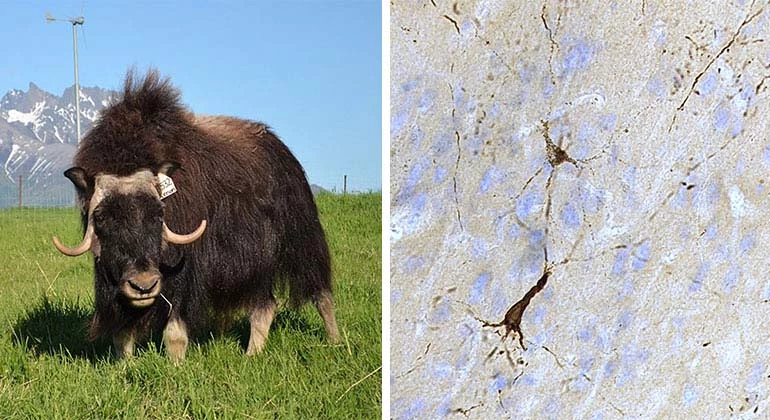Understanding and treating traumatic brain injuries (TBI) in humans is difficult as some, such as chronic traumatic encephalopathy (CTE), can only be diagnosed after death. Scientists may have unearthed a valuable new tool to study these conditions, in the form of headbutting animals such as bighorn sheep and muskoxen, in which they've discovered hallmarks of head trauma for the very first time.
“Death and disability caused by traumatic brain injury is a widespread problem that needs better solutions,” said Nicole Ackermans, study leader and postdoctoral fellow at the Icahn School of Medicine at Mount Sinai. “We showed that animals which regularly engage in headbutting may actually suffer the kind of traumatic brain injury seen in humans. This opens the possibility that by studying these animals we could learn a lot about traumatic brain injury.”
This discovery actually runs counter to conventional wisdom around the brain health of ramming animals, which is itself kind of counterintuitive. Some, such as male muskoxen, can reach speeds of 30 mph (48 km/h) before colliding with one another as part of their mating and social hierarchy rituals, but little evidence of brain injury and concussion has been found in these animals. This is because, like woodpeckers that bash their heads against trees thousands of times a day, they have evolved mechanisms to protect their brains from the impacts.
But that doesn't doesn't mean there aren't still lessons to be learnt by studying these animals. Bovids, a family of hoofed mammals that includes cows, bighorn sheep and muskox, have folded, or gyrencephalic, brains, the same type found in humans. Until now, however, no studies have directly tested the brains of these animals for signs of traumatic brain injury.
“Our lab tries to use evolution to help solve medical mysteries,” said Patrick R. Hof, senior author of the study. “One of the difficulties of TBI research is that most of it is performed on smooth, rodent brains. We thought that studying the brains of ramming bovids might provide a better model for understanding TBI in humans.”
The team secured the brains of three deceased muskoxen and four bighorn sheep, and their initial analysis revealed no surprises, with scans showing intact brain structures for each animal. The brains were then cut into slices and treated with antibodies that reveal phosphorylated forms of a protein called tau, often seen in the brains of patients with TBI and also Alzheimer's disease.
When viewed under the microscope, the bighorn sheep brains showed lightly detectable levels of the antibody. The muskoxen brains, meanwhile, showed easily detectable levels of the antibodies, and the prefrontal cortex region showed high levels of tau tangle formations, especially near the surface.

“This pattern is sometimes seen in the brains of people who suffer from CTE,” Dr. Ackermans said. “Our results open the possibility that these animals' brains undergo chronic, repetitive damage, as seen in some TBI patients.”
Interestingly, one old female muskox had around 20 times more staining than the older male, and around five times more than another female. Males are known to ram each other much harder and more often than females, raising some new questions.
“This study left us with many interesting questions, like: Why did the female muskox brains appear to have more damage than the male ones?" said Ackermans. "Is this because of differences in skull anatomy? Why did the brains of bighorn sheep have so little damage? And is it possible to harness the knowledge we gain from these animals to develop better treatments for TBI?”
The research was published in the journal Acta Neuropathologica.
Source: Mount Sinai




